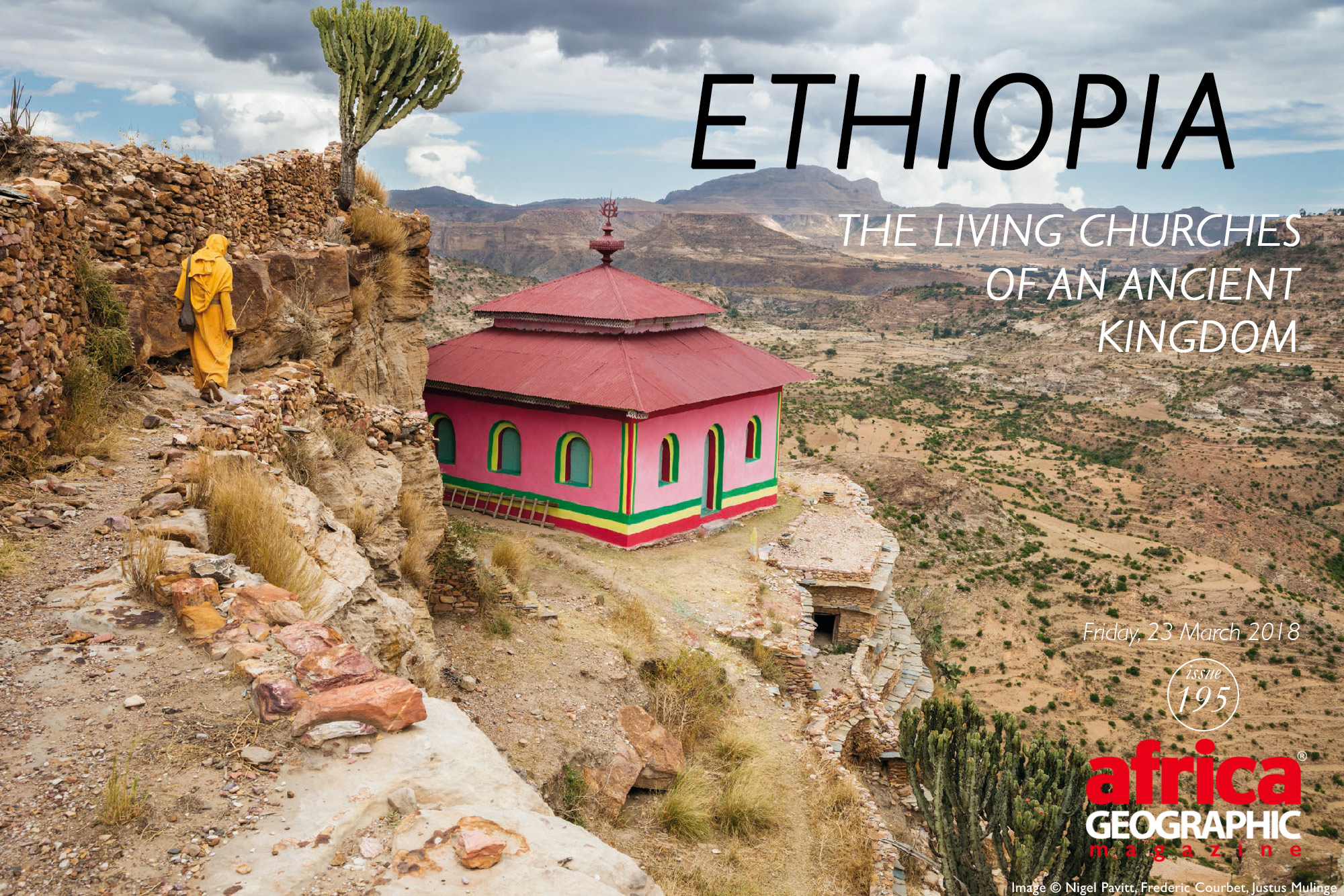
A visual exploration of Ethiopia's extraordinary Christian heritage

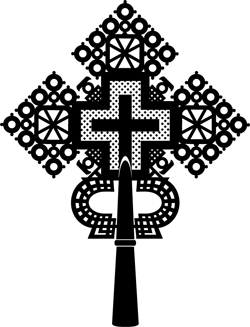
It was early in the fourth century AD, under the reign of King Ezana, when the ancient Kingdom of Aksum (or Axum) – a major naval and trading nation that spanned a large portion of east Africa, including modern-day northern Ethiopia – embraced the Orthodox tradition of Christianity. The capital city of the empire was Aksum, and at the time was considered to be part of only a handful of Christian states in the world. Research shows that the kingdom used the name “Ethiopia” as early as the fourth century.
However, it was during the seventh century when the empire slowly began to decline as Aksum was faced with the rise of Islam, which was spreading west from the Arabian Peninsula. The Islamic Empire took control of the Red Sea trading routes, forcing Aksum into economic isolation. Even if not threatened directly, Aksum was now cut off from its Christian allies around the Mediterranean. Its power waned. While many northeastern African states were converting to Islam, the Christian kingdom of Aksum maintained its faith. Christianity became the distinguishing feature of the nation – a rallying cry, an emblem of kinship that transcended the importance of any single ruler – and they produced a rich legacy of monasteries and churches that demonstrated the tenets of their faith.
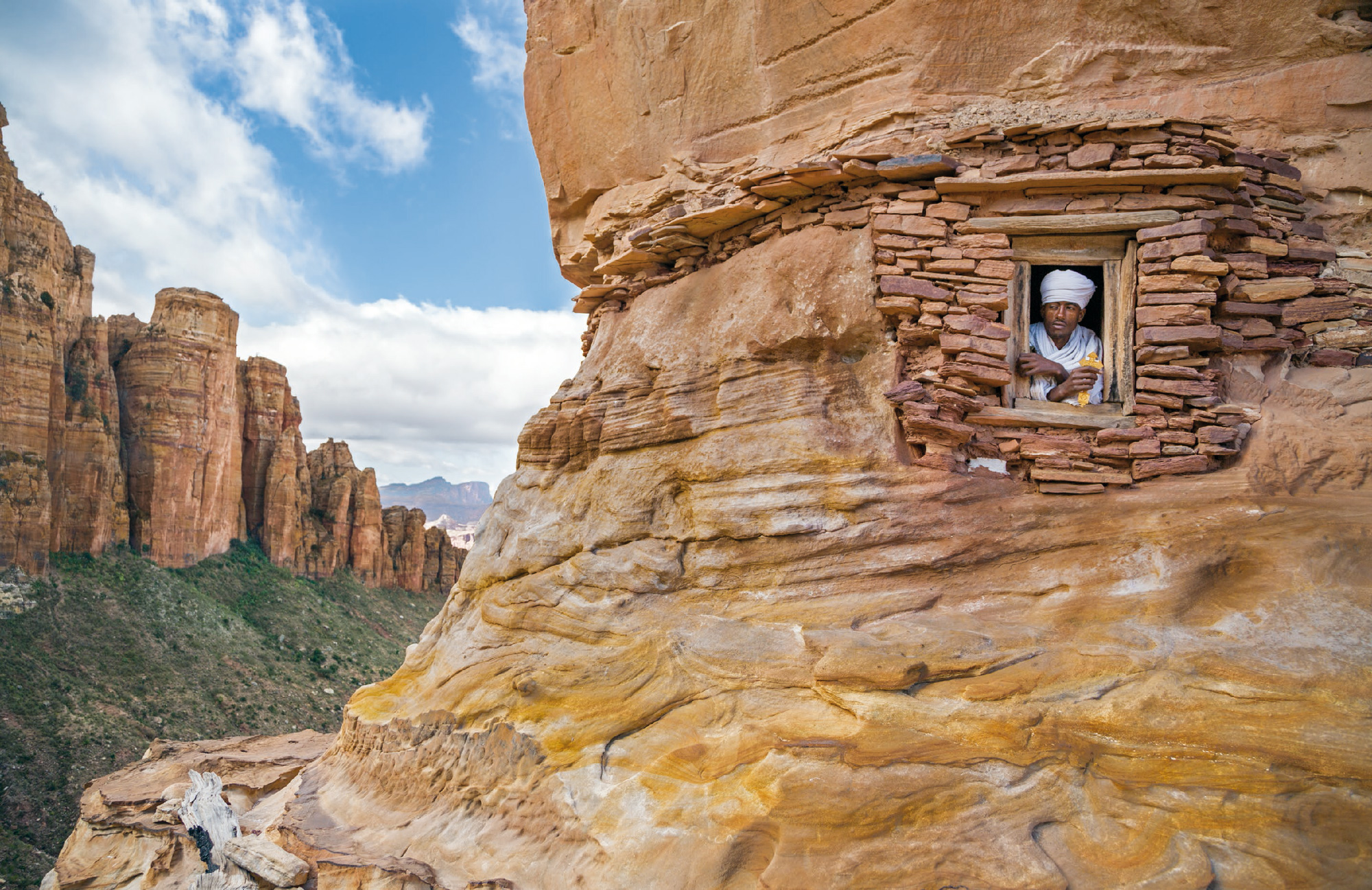
It is these churches, monasteries, the vibrant art and traditions of worship that have been encapsulated in the book Ethiopia: The Living Churches of an Ancient Kingdom, by Mary Anne Fitzgerald and Philip Marsden. The book traces the broad sweep of ecclesiastical history, legend and art, covering sixty-six breathtaking churches that astound with their architecture, colourful decorations, and prominent religious festivals.
Over 800 stunning photos capture the life that is often unseen by visitors and presents these places in all their splendour while also recording the daily observances of the faithful. Join us as we go on a brief visual exploration into Ethiopia’s Christian heritage.
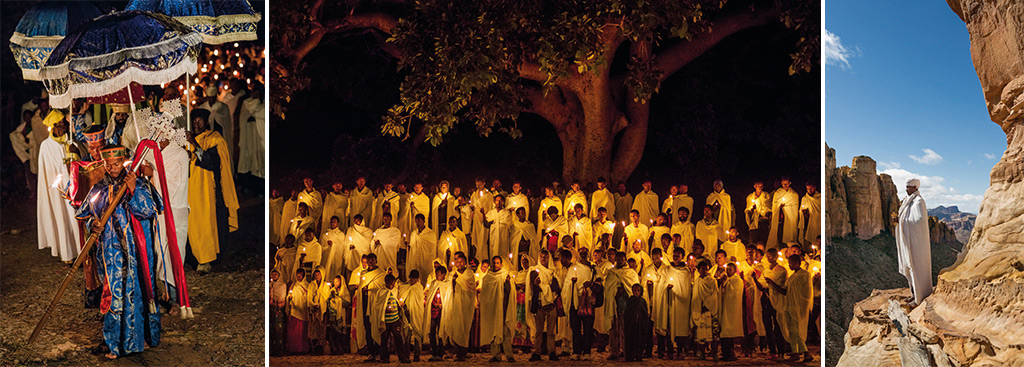
St. Mary of Tsion – the holiest of all the churches
In 340 AD, King Ezana commissioned the construction of the imposing basilica of St. Mary of Tsion in Aksum. It was here, the Ethiopians say, that Menelik, son of King Solomon and the Queen of Sheba, brought the Ark of the Covenant containing the Ten Commandments. This sacred tabot (a consecrated wooden altar slab, made of wood or stone) was placed in the sanctuary, confirming to Ethiopians that they are the chosen people of God. Today, St. Mary of Tsion represents the spiritual heart of Ethiopian Christian Orthodoxy.
Next to the compound of St. Mary of Tsion is the church Arbatu Entsessa. Here you will find exquisite paintings dedicated to the Four Beasts of the Apocalypse.
For visitors and worshippers alike, the paintings in the churches of Ethiopia form an integral and powerful part of the experience. The paintings are not just representations but are believed to be the expressive manifestations of the spirit of their subject. Church authorities are quick to assert that it is not the images that are worshipped, but the figures they embody.
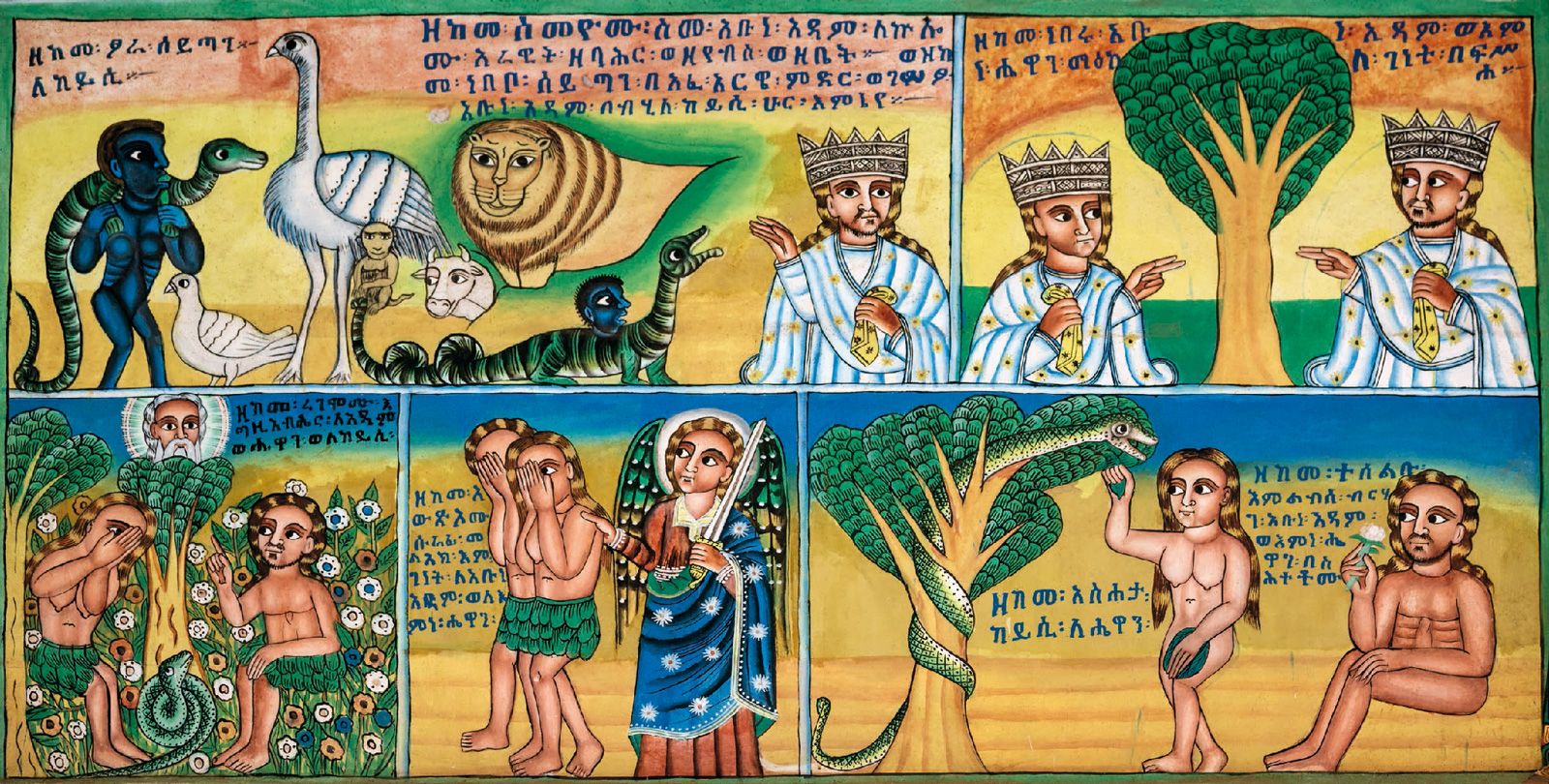
Over the centuries many of the paintings have been destroyed either from destruction due to invasions, or from weather conditions and leaking thatched roofs where many of the wall paintings have corroded. None of the paintings created in the early period of Ethiopian Christianity have survived. The walls and ceiling of Arbatu Entsessa are covered with liturgical pictures done initially in warm earth tones but have since been repainted using a riot of primal colours.
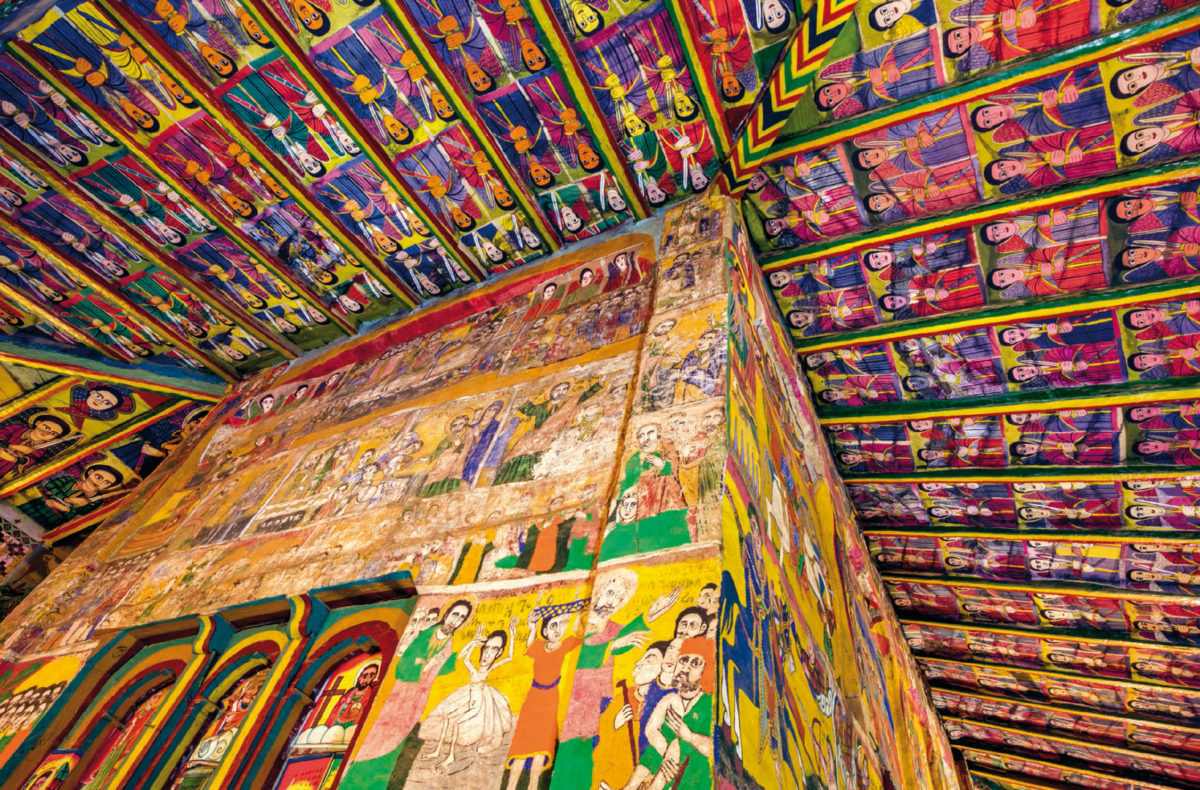
Ancient manuscripts
Abba Garima monastery was founded by Abba Garima, one of the Nine Saints – a group of missionaries who were influential in the initial growth of Christianity during the late fifth century – and is home to the illuminated manuscripts of the New Testament Gospels. Not only are these the oldest manuscripts in Ethiopia, but also the earliest illustrated Gospels in the world – recent carbon dating of two pages put the dates between 330 and 650 AD. The story goes that Abba Garmia wrote the five-hundred-page Gospels in one day. However, by sunset, he was not quite finished, so he prayed for intercession – a prayer that pleads with God for your needs and the needs of others. God answered him by providing three extra hours of daylight for him to complete his writing.
The Gospels are bound in two volumes, and the monks are fiercely protective of them and are safeguarded in the monastery.
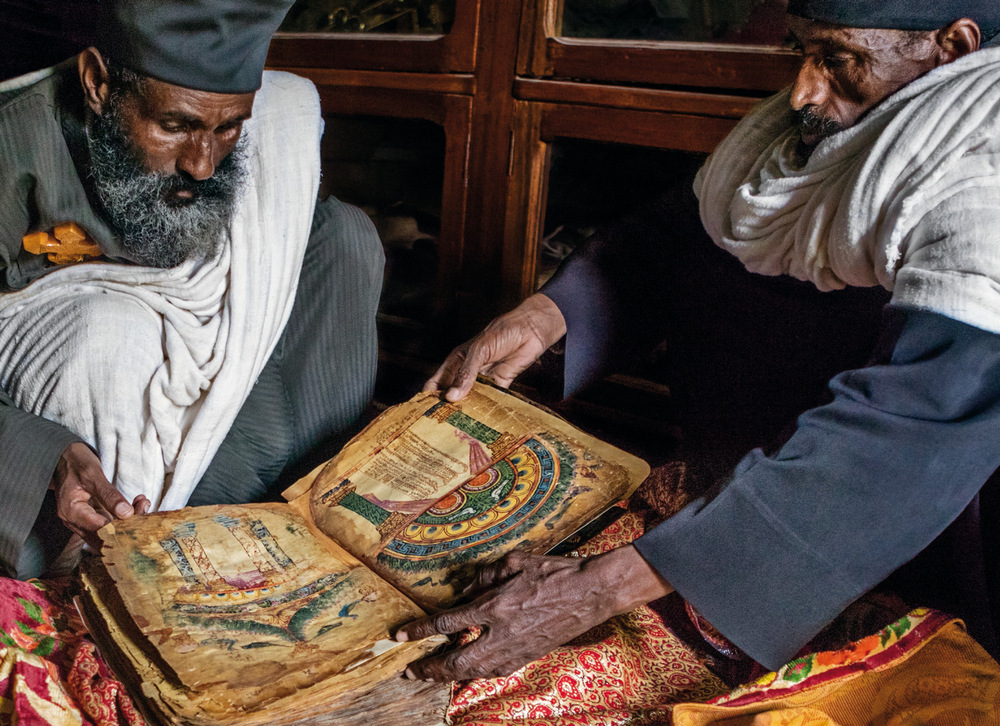

The almost inaccessible Debre Damo monastery
Debre Damo monastery is dedicated to its founder, Abuna Za-Mikael (also known as Aragawi), one of the Nine Saints. It dates to the sixth century and is considered one of the most important centres of Christianity in Ethiopia. Only men are allowed to enter this almost inaccessible monastery, located at the top of a sheer-sided amba – a steep-sided, flat-topped mountain – that is one kilometre in length. To access the monastery men must pull themselves up with a rope of twined leather – though the monks are there to help haul if need be. The church of Abuna Aregawi, built in the Aksumite style in the tenth or eleventh century, is probably Ethiopia’s oldest intact church.
In the past, the monastery served both as a refuge from invaders due to its remote location, and housed excess male members of the royal family, thus removing possible threats to their reign. Today, an estimated 150 monks live there, who are entirely self-sufficient – growing crops and raising (all male) livestock – and therefore have no need to leave the mountain.
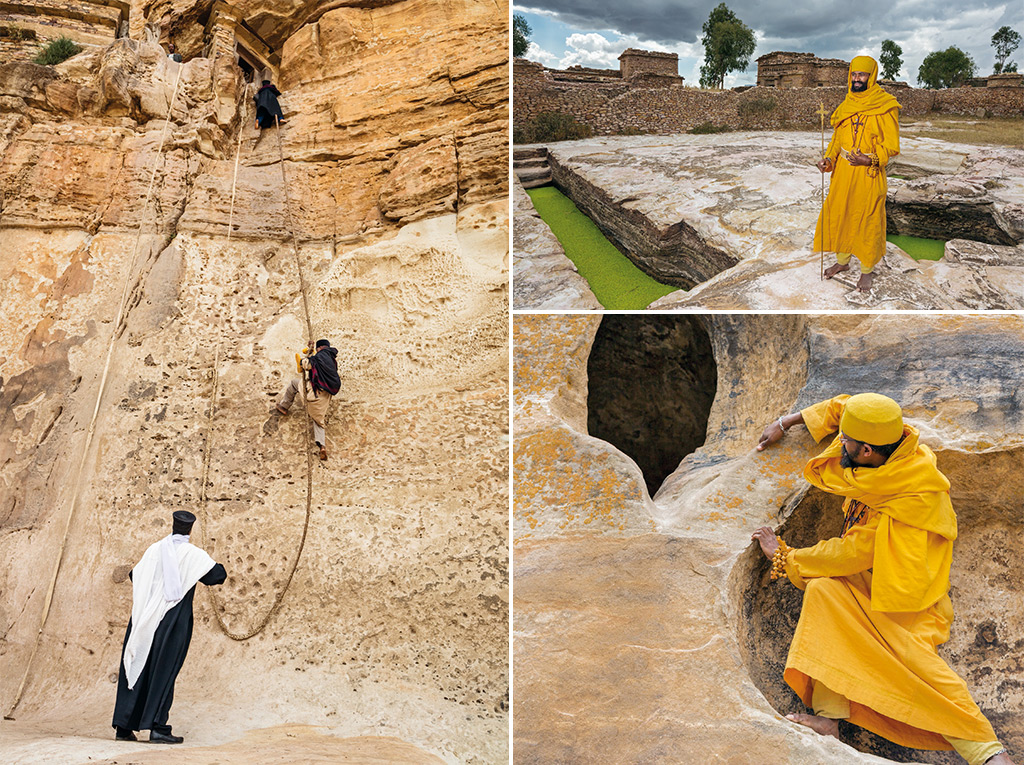

Abuna Yemata Guh – reaching for the heavens
Abuna Yemata Guh Church in Tigray is an incredible example of a triumph of faith and endurance. The monolithic church, founded by Abuna Yemata – of the Nine Saints – is hewn into the side of a rock face at a height of 2,580 metres. After founding a monastic community in Aksum in the sixth century, Abuna Yemata chose to establish a hermitage at the summit because of its needle-like pinnacle, pointing like a finger towards the heavens.
To access the entrance, one has to navigate up a steep and hazardous rock face, culminating in a ledge with a two hundred metre drop! Priests cheerfully tell visitors that pregnant women, babies and old people attend Sunday services and no one has fallen off… yet.

Vibrant religious festivals
The festival of St. Mary – 30 November
This is one of Ethiopia’s largest festivals and is celebrated once a year to remember St. Mary, the most venerated of all Ethiopian saints. It also honours the believed presence of the Ark of the Covenant in the St. Mary of Tsion church in Aksum. The festival is attended in large numbers by people from all over the world every year, making it one of the most joyous annual pilgrimages in Ethiopia.
Timqat – 19 January
Timqat is the festival celebrating the Christ’s baptism (Epiphany) in the River Jordan. It is the most important of Ethiopia’s nine major Christian feasts and is highly regarded in Addis Abeba, Lalibela and Gondar. In this celebration, tabots (replicas of the Ark of the Covenant that are present on every Ethiopian altar) are taken from various churches the day before the main festival – wrapped in rich cloth and carried high on the heads of priests – to a place of blessing near a large pool or river, to represent the role of the River Jordan in Christ’s baptism. It is only for this festival that the tabots are ever removed from the churches.

Bottom left to right: 1) Lalibela priests carry tabots, replicas of the Ark of the Covenant, during the festival of Timqat © Nigel Pavitt, Frederic Courbet, Justus Mulinge; 2) The following morning, deacons with processional crosses from three of the churches stand at the edge of a baptismal pool that signifies the River Jordan where Jesus was baptised by John the Baptist © Carol Beckwith, Angela Fisher; 3) A priest displays a painting of the Holy Virgin Mary and Child for all to see during the festival of St. Mary © Nigel Pavitt, Frederic Courbet, Justus Mulinge
Overnight the tabots remain in a tent, attended to by the clergy with church singers, debtaras, singing and chanting throughout the night. At daybreak, the procession continues to the water for the official baptism ceremony where the priests bless the water, dip their crosses in it and then extinguish a consecrated candle. The people then collect the water to take home and, at many sites, they bathe in it. The tabots are then transported back to the churches as the priests walk in solemn procession, accompanied by the joyful crowds and the wild energy of the debtaras singing in celebration. ![]()
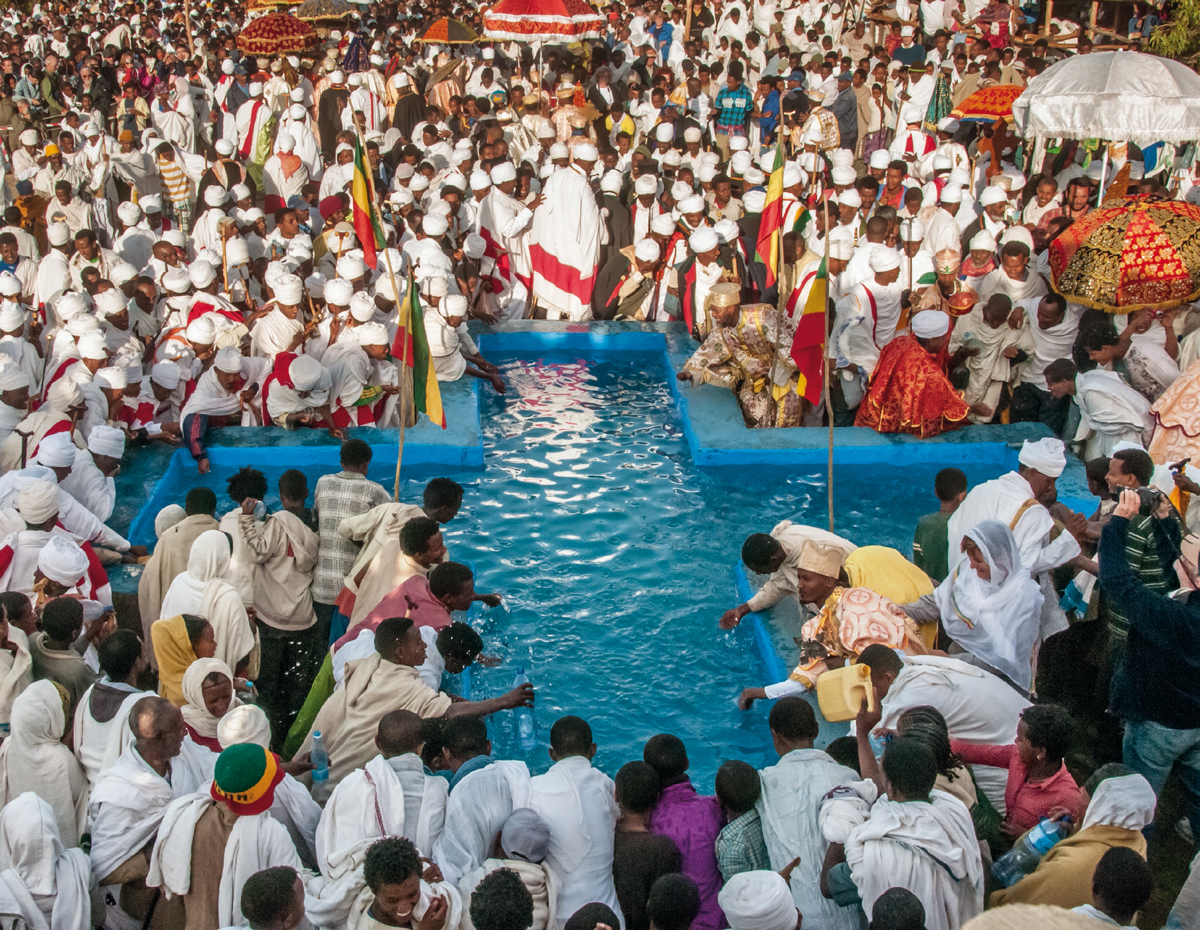
Have a look at our Ethiopia safaris below:
• Ethiopia, the cradle of humankind
• Ethiopia’s Omo Tribes

ABOUT THE AUTHORS
 Mary Anne Fitzgerald has covered eastern Africa for The Economist, the Financial Times, and The Sunday Times of London, and is the author of eleven books on Africa, including the bestselling Nomad: One Woman’s Journey into the Heart of Africa. She lives in Kenya. Philip Marsden is the award-winning author of several books of travel, history, and fiction, including The Chains of Heaven: An Ethiopian Romance and The Barefoot Emperor: An Ethiopian Tragedy. He lives in England. Nigel Pavitt MBE OGW has written five books on Africa illustrated with his photographs. They include Kenya: The First Explorers, Samburu, Turkana: Kenya’s Nomads of the Jade Sea, and Africa’s Great Rift Valley. He lives in Kenya. Frederic Courbet is a Belgian photographer and cameraman whose work has appeared in The Guardian, The New York Times, Der Spiegel, Le Monde, Time magazine, and Newsweek. He lives in Australia. Justus Mulinge is a young Kenyan photographer who lives in Nairobi with his wife and two sons. With his eye for detail, he was an essential member of the photographic team for this book.
Mary Anne Fitzgerald has covered eastern Africa for The Economist, the Financial Times, and The Sunday Times of London, and is the author of eleven books on Africa, including the bestselling Nomad: One Woman’s Journey into the Heart of Africa. She lives in Kenya. Philip Marsden is the award-winning author of several books of travel, history, and fiction, including The Chains of Heaven: An Ethiopian Romance and The Barefoot Emperor: An Ethiopian Tragedy. He lives in England. Nigel Pavitt MBE OGW has written five books on Africa illustrated with his photographs. They include Kenya: The First Explorers, Samburu, Turkana: Kenya’s Nomads of the Jade Sea, and Africa’s Great Rift Valley. He lives in Kenya. Frederic Courbet is a Belgian photographer and cameraman whose work has appeared in The Guardian, The New York Times, Der Spiegel, Le Monde, Time magazine, and Newsweek. He lives in Australia. Justus Mulinge is a young Kenyan photographer who lives in Nairobi with his wife and two sons. With his eye for detail, he was an essential member of the photographic team for this book.
Ethiopia: The Living Churches of an Ancient Kingdom (published by The American University in Cairo Press)
The book unveils never-before-seen photographs of various religious sites in Ethiopia. With over 800 colour photographs taken by talented photographs, this magnificent, large format, full-colour volume is the most comprehensive celebration ever published of Ethiopia’s extraordinary Christian heritage.
To comment on this story: Login (or sign up) to our app here - it's a troll-free safe place 🙂.![]()






